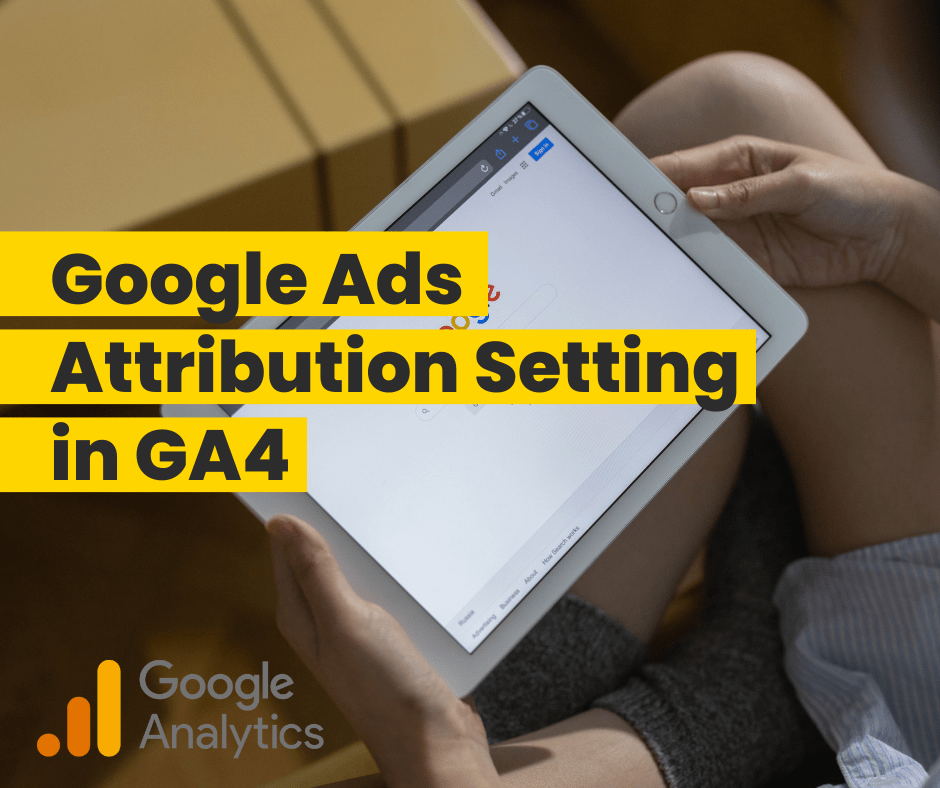One of the main benefits of connecting Google Analytics with Google Ads is that you can pass the conversion data from Google Analytics to Google Ads. However one of the main points of using conversion data is assigning an attribution model to the conversion data.
By setting up the conversion import from Google Analytics to Google Ads, this will take into consideration other channels which will give a better reflection on the share of the conversion over multiple touch points.
What other options are there for tracking conversion data in Google Ads?
The other option for tracking conversion in Google Ads is by using the Google Ads Conversion tag, which is a bit of code that is assigned to all conversions on the site that sends data to Google Ads.
This method will attribute the conversion to Google Ads if Google Ads was somewhere in the journey and then award the whole sale to this ad. Of course, this does depend on whether this Google Ads Conversion tag has been correctly set up to pass the full conversion value.
Previously in Universal Analytics there were very little options. You connected the two platforms and that was it. There were limited options around what attribution rules were used and if organic traffic was considered.
What conversion and attribution settings have changed since the launch of GA4?
One of the biggest changes Google has made to tracking in recent years was the release of GA4, but Google Ads has also come out with a few changes to how it handles the data in the background which has resulted in more options for the user to change. Some of these options include:
- In GA4 there is now an option called “Channels that can receive credit” that is passed to Google Ads
- Admin > Data display > Attribution Settings > Channels that can receive credit
- There are two options:
- “Google Paid Channel” – Only Google Ads paid channels are eligible to receive conversion credit.
- “Paid and Organic Channels” – Paid and organic channels are all eligible to receive conversion credit, but only credit assigned to Google Ads channels will appear in your Ads account.
- In GA4 you can create your own Audiences, and this can also be imported into Google Ads
- Admin > Data display > Audiences > New audience
- Previously Google Ads used the Remarketing Tag to collect this data and used it in Google Ads to target certain users.
- In Google Ads, you can select the attribution model you would like to use (Data Driven or Last Click Wins)
- Tools > Conversions > Select the conversion that is coming from Website > Edit Settings > Attribution
- Please note that if the conversion has not been setup, you might not see it here and this would need to be done and you would set the attribution rule up as part of the set up.
It looks like there are a lot of options that are available over the two Google Products, however Google has pulled back on the number of Attribution models that are available. There are only 2 options now available:
- Data-driven
- Last click
In Google Analytics there is also an option for Last Click Google Paid Channels.
Are these changes for the better?
The change to “Channels that can receive credit” is a significant improvement. However, some challenges with this are:
- How are the channels getting defined. For example, are the channels just based on the default channel groupings that Google defines, and does it not consider any custom rules that you might have set up?
- With it stating Paid and Organic, what about other channels that do not have Paid or Organic in the name for example Email, Affiliates, referrals, etc. Are they being excluded or not?
The reduction of attribution models available really limits the choice to the end user. This appears to benefit Google by only offering two options:
- Last Click – an outdated model, which has some benefit for inexperienced users just starting to look at different attribution models that is easy to explain.
- Data Driven – Google Recommend model – there is no clear understanding of how this model works.
What Attribution Model and Settings should you use?
Regardless of what attribution rule you decide to use, we would recommend that the same model is used in both Google Ads and Google Analytics.
We would also recommend that “Channels that can receive credit” is set to “Paid and Organic Channels.” You need to be aware that if you make this change you will see the conversion numbers in Google Ads drop, this is due to the fact that more channels are being taken into consideration. This will influence your performance, but the number will now match much better in GA4 and you will have less questions about the conversion numbers in the two platforms.
There has been a lot of changes for the better and this gives the appearance that Google is improving the product for the better. However, the reduction of Attribution models on offer and the lack of transparency with how the data-driven model works and how channels are defined may suggest that Google is hiding something.
If you’d like to learn more or need help with GA4, feel free to get in touch with the ASK BOSCO® team and we’ll be more than happy to help you out.




